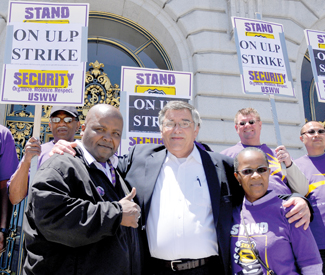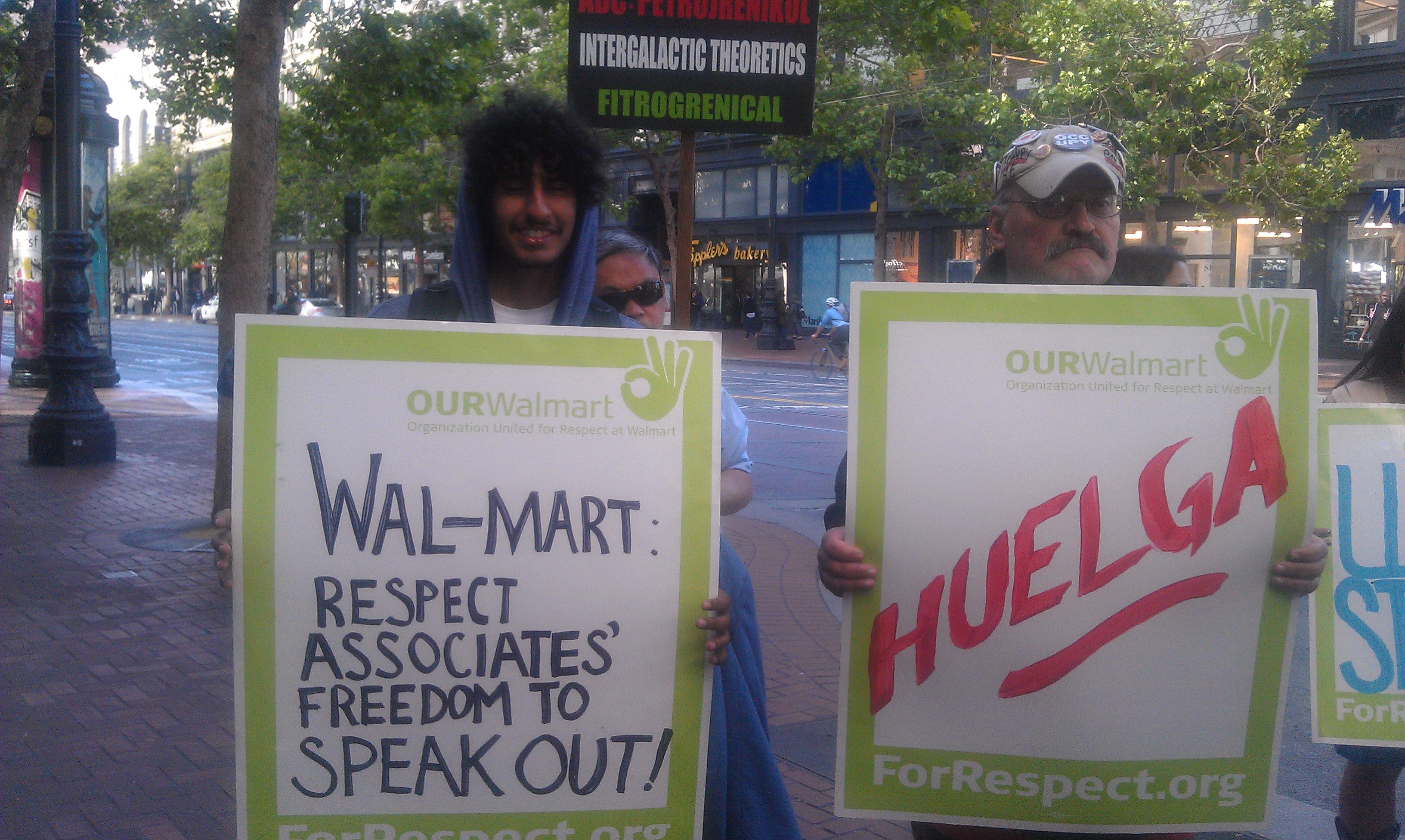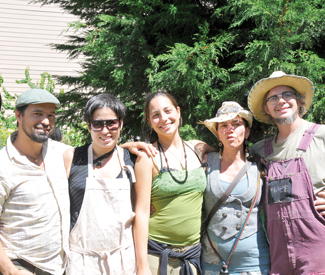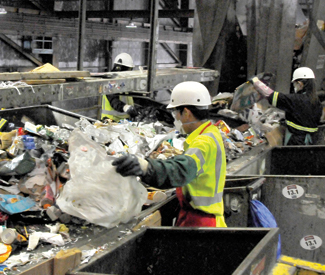rebecca@sfbg.com
On a recent Tuesday night, some of the city’s most influential developers, architects, and land-use lawyers gathered in a conference room at the ritzy W Hotel for a panel discussion, titled, “San Francisco’s Housing Crisis: Can the Tech Boom Help Us?”
It was a provocative question by any measure, but equally intriguing was the lack of even a hint of objection to the dead-serious framing of increasing unaffordability as a “crisis.”
Even among well-heeled property brokers at the event, which was hosted by San Francisco Magazine and the San Francisco Housing Action Coalition, there appears to be universal acceptance that the city stands at a crossroads.
“The question asks itself: Who gets to live in San Francisco?” Tim Colen, HAC’s executive director, stated by way of introduction.
To break it down into extremely simplified terms: High-salaried professionals easily make the cut, while tenants of modest means who lack stable rent control are more hard-pressed to find housing they can afford. Opinions on how to approach this problem differ sharply.
Colen and other panelists posited that the solution is to build as the city has never built before, aiming for the construction of 100,000 units in the next two decades. But panelist Peter Cohen of the San Francisco Council of Community Housing Organizations countered that today’s development projects aren’t being constructed for people who actually live in the city, 61 percent of whom make less than 120 percent of the Area Median Income.
The city’s real-estate market is invariably described by those who closely track it as “hot,” or “bubbly,” bringing to mind a cappuccino, perhaps, that induces a jittery feeling. Speculation abounds.
The ripple effect extends beyond residential units. All across the seven-by-seven peninsula that once represented a haven for misfits and iconoclasts, stories abound of arts organizations, nonprofits, and community gathering spaces getting priced out, pressured to move, or otherwise swept away due to economic circumstances beyond their control.
From 2009 to 2013, UC Berkeley economist Enrico Moretti noted, explosive job growth coincided with San Francisco bearing the third-largest spike in rental prices on average, nationwide. In 2011, San Francisco rents were 34 percent higher than they had been 2003; by 2012, they had jumped to 53 percent higher, according to a market analysis prepared by The Concord Group. According to San Francisco Rent Board data, 1,757 eviction notices were filed from March of 2012 to February of 2013, reflecting a 12-year high.
“The problem has serious social consequences,” Moretti said at the event, sounding for an instant like a tenant advocate. “There is a serious amount of displacement.”
Every upheaval is messy, every tenant-landlord rift is complicated, and circumstances vary case by case. But taking a broad view, the overwhelming consequence of San Francisco’s gale-force property market pressure is a cultural shift; the fabric of a longstanding community is unraveling. Below are a few stories of the people and projects that are finding they won’t be able to stay in the San Francisco spaces they occupy for much longer.
THE CORNER OF HAIGHT AND RESENTMENT
Jon Zuckman, better known as Jon Sugar, showed up for a May 15 court appearance on his pending eviction proceeding with an entourage in tow. He was flanked by LGBT housing activist Tommi Mecca, perennial political candidate and sex worker Starchild, and radical activist Jerry the Faerie, among others, all longtime characters of the city’s lefty, radical LGBT scene.
Judge James Robertson, citing a letter he’d received from Zuckman’s doctor, agreed to grant a 60-day continuance, “for the purpose of allowing the defendant to try and locate alternative housing.”
A former KPFA radio personality, comic, writer, and DJ, Zuckman moved to San Francisco in his early 20s and lived in the Haight for 40 years. He’s now 63. He played in a band, ran an underground sex venue called the Mini Adult Theater, helped organize against a Republican-led 1978 proposal to ban gay teachers from California schools, supported AIDS benefits and battered-women support groups, and founded GAWK, the Gay Artists and Writers Kollective. He’s getting evicted from the Stanyan Street apartment building he’s lived in for 25 years, and has no idea where he’ll go after that.
Officially, he’s being evicted for violating the terms of a legal stipulation hashed out with landlord Al DeLorenzi pertaining to a bedbug infestation treatment. Zuckman claims he notified his landlord about the pest problem two years ago and no action was taken until he phoned the Department of Public Health.
DeLorenzi told the Bay Guardian that Zuckman is to blame for the bugs and that he’s just trying to keep the infestation in check. “There is no comment, he can say what he wants to say about this and that,” DeLorenzi said when reached by phone.
Complaints filed with the city’s Department of Public Health reveal a host of issues associated with the property over the years, from mice to broken light fixtures to a malfunctioning door buzzer.
Zuckman lives with a roommate in a rent-controlled unit, paying considerably less than tenants who pay market rate to live in the building. “I live,” he tells people, “on the corner of Haight and resentment.”
Zuckman is disabled, and says he’s undergone seven surgeries on his foot, plus a knee replacement. Asked if he’s on a fixed income, he responds, “It’s broken. I am on disability. It’s $869 a month. My rent is $600. My phone and Internet is like $55 to $60. And the rest is like, party, party, party.”
Tony Robles, of the elder advocacy organization Senior Disability Action, submitted a letter to the court in support of Zuckman. Robles said his office has experienced a spike in demand for services lately. “We’ve been having a large increase in calls, and people walking in and wanting to know if there’s available housing,” he says, adding that most clients are seniors grappling with eviction. “A lot of these folks, they’re scared.”
For his part, Jon Sugar is trying to maintain his sense of humor. “If I curl into a ball and let out with great heaving sobs, it’s not going to help,” he says. He doesn’t know of any good answers for stemming the tide of evictions currently sweeping San Francisco. “There’s got to be other ways than throwing crippled old DJs out into the street,” he says. Then he lets out a laugh. “I crack me up.”
URBAN FARMS AND CIRCUS ARTS: MAKE WAY FOR DEVELOPMENT
On a recent Saturday, the collective that started Esperanza Gardens hosted an event at its tiny fenced-in San Francisco garden plot, billed as a “be-in.” Ukulele music floated in the air as several people painted sweeping brushstrokes onto a mural. Volunteers dished up organic pizza with donated ingredients, cooked in a handcrafted cob oven. A dreadlocked gardener named Ryan Rising was preparing to host a permaculture workshop. The sun was hot, and flowers bloomed in vibrant hues.
Esparanza Gardens was started four years earlier, and the suntanned gardeners gathered under the shade of a 20-foot high cypress that had been a wee sapling when they first started out. But the afternoon gathering was bittersweet; this was a farewell ceremony.
They’d always known the project would be temporary. “We definitely understood what we were getting into,” explained Jonathan Youtt, an urban farmer clad in purple overalls and a straw hat, who’s recently been devoting more time to an urban farming project in Oakland.
The landlord, Lloyd Klein, had granted rent-free use of the space to the underfunded farmers with the stipulation that they’d have to clear out when the time came. He’s since secured entitlements for an ultra-green, four-unit building for that lot and told the Guardian he hopes to break ground by July, if he can secure building permits in time. “We’re trying to accomplish a net-zero energy usage building,” Klein told the Guardian in a telephone interview. “It will create its own energy from solar.”
None of the gardeners seemed to harbor bitter feelings toward Klein, who sanctioned their all-volunteer effort, but all those interviewed expressed concern that the loss of Esperanza coincides with the loss of two other urban farming plots in San Francisco. This was a space where they’d raised bees, harvested produce together, and led workshops with groups of at-risk youth from the surrounding area.
“The loss of space to teach farming is what the issue is,” Youtt says. “Without that, we’re going to have a void. It’s tragic in light of what’s happening simultaneously.”
The Hayes Valley Farm, at Fell and Octavia streets, is also on its way to being cleared to make way for housing, an outcome that was anticipated from the start of the project. Another urban agriculture project on Gough and Eddy, called the Free Farm, also has to vacate by the end of the year, when a development project goes up on that lot.
For years, the produce grown at Esperanza and Free Farm has supplied the nutritious bounty that is freely distributed every Sunday at a Mission intersection via the Free Farm Stand. An urban farmer, who goes simply by Tree, spearheaded the all-volunteer project in 2008. “We wanted to make sure that low-income people have access to fresh, locally grown produce,” Tree explained when reached by phone. “Everywhere I look in the Mission, there’s new restaurants. But wherever there’s affluence, there’s always people thrown in the cracks.”
The loss of a sliver of urban farms is just one change that could dramatically transform that Mission District parcel, located on Bryant between 18th and 19th streets. The Esperanza garden plot is sandwiched up against an arts venue called Inner Mission, which has been hosting events like circus and burlesque shows and aerial arts performances in its recently renovated space since January. Inner Mission is located in the same building that previously housed CELLspace (“CELL” stood for Collective Exploratory Learning Lab), a famed underground San Francisco arts collective launched in the 1990s.
An online “obituary” penned for CELLspace by caretaker Devin Holt offered a glimpse into what it was like in the early days: “It was 1996 in San Francisco. A time when you could still find a room in the Mission for $300, and the dotcom boom hadn’t turned empty warehouses into prime real estate. When the screen printing business moved out, the dreamers moved in. … The early years at Cell were marked by chaos and construction. Dave X was known to test his flamethrowers behind the building on Florida St., Jojo La Plume created an open craft loft in the homemade mezzanine, and the Sisterz of the Underground offered free break dancing lessons for aspiring b-girls on the main space floor.”
On March 14, the Nick Podell Company, a development firm, submitted a project review application to the San Francisco Planning Department, city records show. The developer has initiated talks about a proposal to raze the warehouse where Inner Mission operates and erect a six-story, 166-unit apartment complex in its place, with parking for 141 vehicles. The company is under contract to purchase the property, according to company representative Linsey Perlov, but it has not yet changed hands. Klein declined to discuss the sale or development proposal at this stage, saying, “I’m not at liberty to speak about it.”
A statement distributed at the “be-in” noted that a group called Mission of the Commons envisions a crowd-funding project that would raise enough funds to purchase the warehouse, though details are sketchy on how exactly this would be accomplished. “Selling off this block to a developer will deeply disable our community, displace many,” the notice reads, “and perpetuate these very issues [of gentrification] we seek to mitigate and stop.”
MISSION BUILDING IS NO PLACE FOR RADICAL ACTIVISTS
The thwack of a stick against a Google-bus piñata at the 16th Street BART station attracted considerable attention on Twitter a few weeks ago during a May 5 event billed as a Mission Anti-Gentrification Block Party. It was organized in part because a 5,200-square feet collective space run by a group of activists is facing eviction from 3265 17th Street. Sometimes called the 17 Reasons building, the property houses Thrift Town, Discount Fabrics and several other businesses at Mission and 17th streets.
The activists signed a four-year commercial lease on the space in August of 2011. Since then, they’ve been using it as a Food Not Bombs cookhouse, where volunteers prepare giant vats of food for the homeless using donated ingredients, and serve it up weekly at the 16th and Mission BART station. The Food Not Bombs collective and two other collective groups, known as In the Works and Rincon, have used the space to host political events, fix bicycles, and provide a place where penniless activists can get projects off the ground.
“The whole point was to make an accessible space,” explained Chema Hernandez Gil, who is involved with the In the Works collective. “We don’t have that in the Mission anymore.”
Now, their idealistic endeavor is quickly spiraling toward a messy legal clash. This past April, Rick Holman, a managing partner at Asher Insights Inc. whose background is in investment banking and corporate finance, purchased the property. On April 10, leaseholders received a three-day notice to quit, the first step in an eviction, charging they’d subletted the space in violation of their lease terms.
In the Works collective members told the Guardian that the building’s locks were changed and they still haven’t been issued new keys, although they are able to gain access using a keypad. They’ve hired an attorney and are exploring their legal options. They view their plight as part of a wider trend of Mission gentrification.
“Every legitimate tenant who was asked has been issued keys,” Holman said when reached by phone. He declined to answer questions about the eviction, saying, “I’m respectful of these people and their privacy.”
TIME’S ALMOST UP FOR BOOKSTORE OF 41 YEARS
On May 8, Modern Times Bookstore Collective sent out an email blast inviting supporters to a town hall meeting to address the loaded question of what their future holds.
“For 41 years, Modern Times has had its doors open to activists, educators, rabble-rousers, queers, and scholars of all stripes,” the collective members of the bookstore wrote. “We’ve maintained our position as a progressive resource, stocking thousands of titles and collections that you’d be hard-pressed to find at most bookstores: queer theory, sex/uality, disability justice, well-curated and left-leaning section of libros en espanol, critical race studies, anarchy, radical retellings of US history, political economy, socialism, Raza studies, African American and Asian American history and analysis, criticisms of the Prison Industrial Complex, and global activism (just to name a few).”
There are myriad reasons why the bookstore is facing challenges, one being the declining market for print books. But there’s also been an erosion of the store’s membership and customer base; so many of the former shoppers have been priced out.
Collective member Lex Non Scripta described the collective’s community as “politically radical, rabble-rousing activists, artists, and a variety of just total weirdos.” But a lot of them “just can’t afford to be in San Francisco anymore,” they went on, singing a familiar tune. “There’s just been a huge shift over to the East Bay.”
On May 16, the bookstore held a town hall meeting with supporters to hash out possible future scenarios. “We don’t want to close. We’re all very attached to it,” they said. But at the same time, “we want a more sustainable model, and it’s hard to figure out what it looks like for books.”
The future of Modern Times remains unclear, and Non Scripta chalked it up to this: “Capitalism and community don’t really mix well.”







